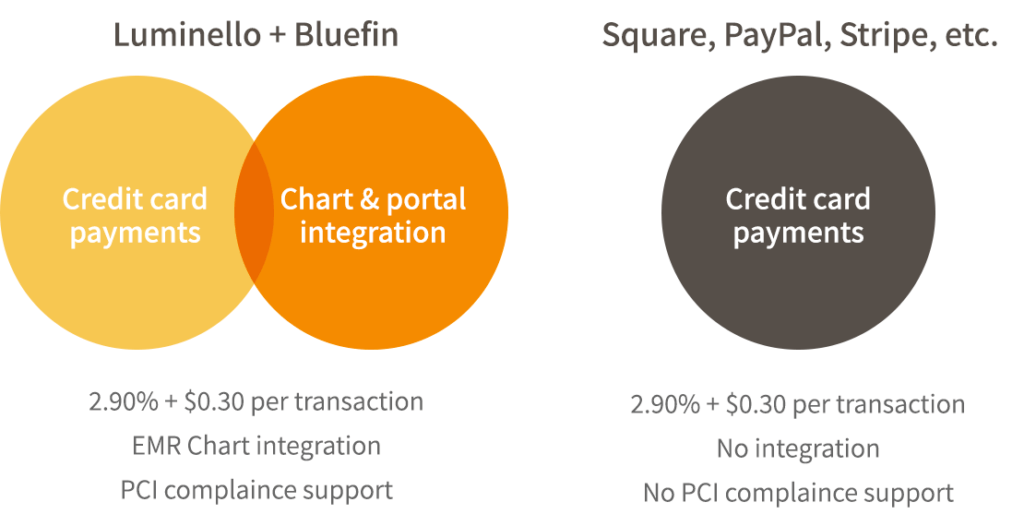When I first started out as a therapist, if you asked me what services I would be providing, I would have paused and with some confusion stated, “Uh, therapy”. Finally, after years in the field, I have come to understand the many nuanced types of services counselors provide. This article is designed to give you a more robust answer to the question, “What do you, as a practitioner, provide to your clients?”
Credentials and Qualifications
The conversation starts with a good look at your qualifications. Many specialized services within psychotherapy and psychiatry REQUIRE special training and even credentialing. There is no quicker way to jeopardize your practice than to provide services you are not qualified to perform.
Every state has different standards and requirements for licensed counselors, and state licensing boards are a good reference to find out what your particular state requires. There are usually specific state guidelines for services such as psychotherapy, psychiatry, or psychiatric testing, even specialty treatments such as ECT or Transcranial Magnetic Stimulation. Having some training in a subject matter does not always equate to being eligible to provide that treatment. Play it safe, before offering treatment, look to your medical and state associations for guidelines/regulations.
Service Offerings
After carefully identifying what services you are ethically and legally able to provide, comes the next big question: What services SHOULD you provide? This is a question you alone can answer based on the goals of your practice, and needs of your clients/patients.
Equipment Costs
When starting any new business, start-up costs weigh heavily. Upfront expenses as well as the ongoing costs of operating a business must be considered, and realistic expectations for income must be factored in. Do your homework, calculate your costs, and watch your bottom line carefully.
Some specialized treatment, such as ECT, can exact a large upfront equipment cost. However, remuneration for such services may be much higher than a regular psychiatry appointment. New self-employed practitioners must make an honest and realistic appraisal of start-up costs, potential income, and what their long-term financial goals are.
Community Needs
No provider treats in a bubble. We are all connected to our surrounding community, as well as to other providers in said community. Understanding the therapeutic map – what practitioners are in the area and what services they provide – can give you a good sense of what is needed. For example, if there are three practitioners providing Transcranial Magnetic Stimulation within a 15-mile radius of you, that market is probably saturated. However, if you were working with a client who could benefit from TMS, you would make it your business to know who to reliably recommend for such a treatment. That’s what good professionals do.
Or if there is a community that lacks a certain expertise that you possess, the location and your skill set may be the perfect match. If, for example, you notice very few providers treating with EMDR, and you have that as a skill set, you could quickly become the provider of expertise in the area.
Platform for Services
We live in an age of an increasing number of platform options for healthcare. Providers of the past had to rely on patients coming to a physical location, but changing technology has decreased the importance of geography in many kinds of treatment. Telehealth, which includes teletherapy and telepsychiatry, are a growing medium for practitioners nationally. When deciding whether to practice in person, online, or both, there are several factors to consider.
Equipment Costs
Every approach to healthcare has a price tag. If you are to provide telehealth, there is likely going to be some startup and ongoing line item expenses. You will need a reliable computer, high speed wi-fi, and a phone/video conferencing platform that ensures clients’ privacy. However, since telehealth can take place in any private room, you may be able to provide this service directly from your home. That could save you a lot of money when it comes to rent. All things to consider!
Client Accessibility
Having provided both teletherapy and in person therapy in my practice, I can tell you that each attracts its own clientele. Clients who easily embrace teletherapy may be hesitant to have face-to-face sessions, while others must have personal contact and are averse to distance counseling. By choosing one, you are going to appeal to some clients more than others. This is when it is good to go back and think about whom it is you most wish to serve. If you most enjoy working with low income families whose ability to access wi-fi or electronic devices is more limited, it would be advisable to have an in-person option. Or if you are working in a more remote part of your state and want to open your practice to those who may not be within driving distance, having telehealth options could be hugely beneficial. This is not necessarily an either/or decision; you may opt for a balance of both approaches.
Your Preference
As practitioners we need to feel comfortable and competent in our practice. Many of us have differing experience and knowledge levels when it comes to technology. Some of us could spend most of the day talking to a screen and be happy as a clam. Others would be just plain miserable doing that, craving physical presence and the certain “home field advantage” of your own counseling room. You will be most effective using the platform that is most comfortable for you.
Summary
In starting your private practice, who will I serve should be answered first, followed by what services will I provide. It’s like knowing your guests when serving a dinner. If children are coming over, mac and cheese works; if some wealthy businessmen, fillet mignon! Clearly you must target what you provide to whom you are serving. Following your passion in determining the population you will serve will often naturally define your services.
The next consideration is start-up costs. Do you have the capital to fuel your dream? If finances are limited, you can have a lean start-up, as I did, by renting a furnished office space and beginning small.
Next, have you done some market research to see what services are already provided in your geographic area? A simple search online can assist you with this.
Finally, what education, training, and experience do you have to enable you to expand your services? Take every opportunity to grow your portfolio.
Do your homework to answer these questions, and this will help you find your niche market, and be confident in the services you provide. Whatever services you decide to offer, serve your chosen population with integrity and compassion.


